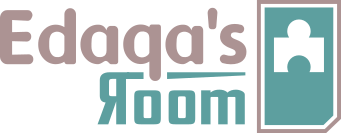
Reverting a coded message back to its source form
Decoding is the process by which an encoded message is reverted back to its original form. In puzzle games the art of the encoding often needs to be determined before the player can decode a message.
It tends to be more common in puzzle games than encoding.
Roman numerals an easy example of encoded numbers. Given a roman number we can follow a simple algorithm to revert it back to the number in a familiar form.
Once the decoding algorithm is known, decoding is work, one of the phases of solving puzzles.
Deriving the decoding algorithm is a separate aspect of the puzzle
If a key is needed to decode information, we generally consider it to be encrypted, instead of merely encoded. Encrypted information is meant to be unreadable without a key, whereas encoded information merely takes a different form.
Encryption exists in an abstract numerical space, where the algorithms and messages can all be expressed with numbers (or letters) and doesn't cross domains (the numbers stays as numbers). Encodings can cross quality domains, such as lingual to visual (encoding words as pictures).
A decryption puzzle focuses on finding a key, since knowing the algorithm is not enough to decrypt the cipher-text. A decoding puzzle either focuses on finding the decoding algorithm, or doing the work of decoding.
In common parlance these terms are not well distinguished. The purpose of finding distinctions is to aid in puzzle design, finding more variety and being able to better judge difficulty.
Deconstruction is a more generic activity of disassembling puzzle pieces. It can be a way to discover the decoding algorithm, or it may not be related to an encoding at all.
Encodings are generic algorithms that can encode an unbound amount of information. Certainly any kind of construction can be used to encode information, but constructions can also be used in ways that don't create true encodings, relying on ambiguity and limited messages spaces. Encodings tend to imply an unbound message space.
An example here is Science History. There is text derived from information, but the resulting form is not an encoding — it could not be unambigously translated back to message.
That makes it more of a construction style puzzle, though perhaps there's a better way to capture this distinction?
If you have any questions, need an example, or want clarification, then let me know. Ask on Discord or Twitter.
Assume everything in this reference is a working draft, there's prone to be some mistakes and inconsistencies. I figure it's best to publish and get feedback rather than write for years in secret. The terms will change, the structure will shift, and the bugs will be chased out. It'll take a while.